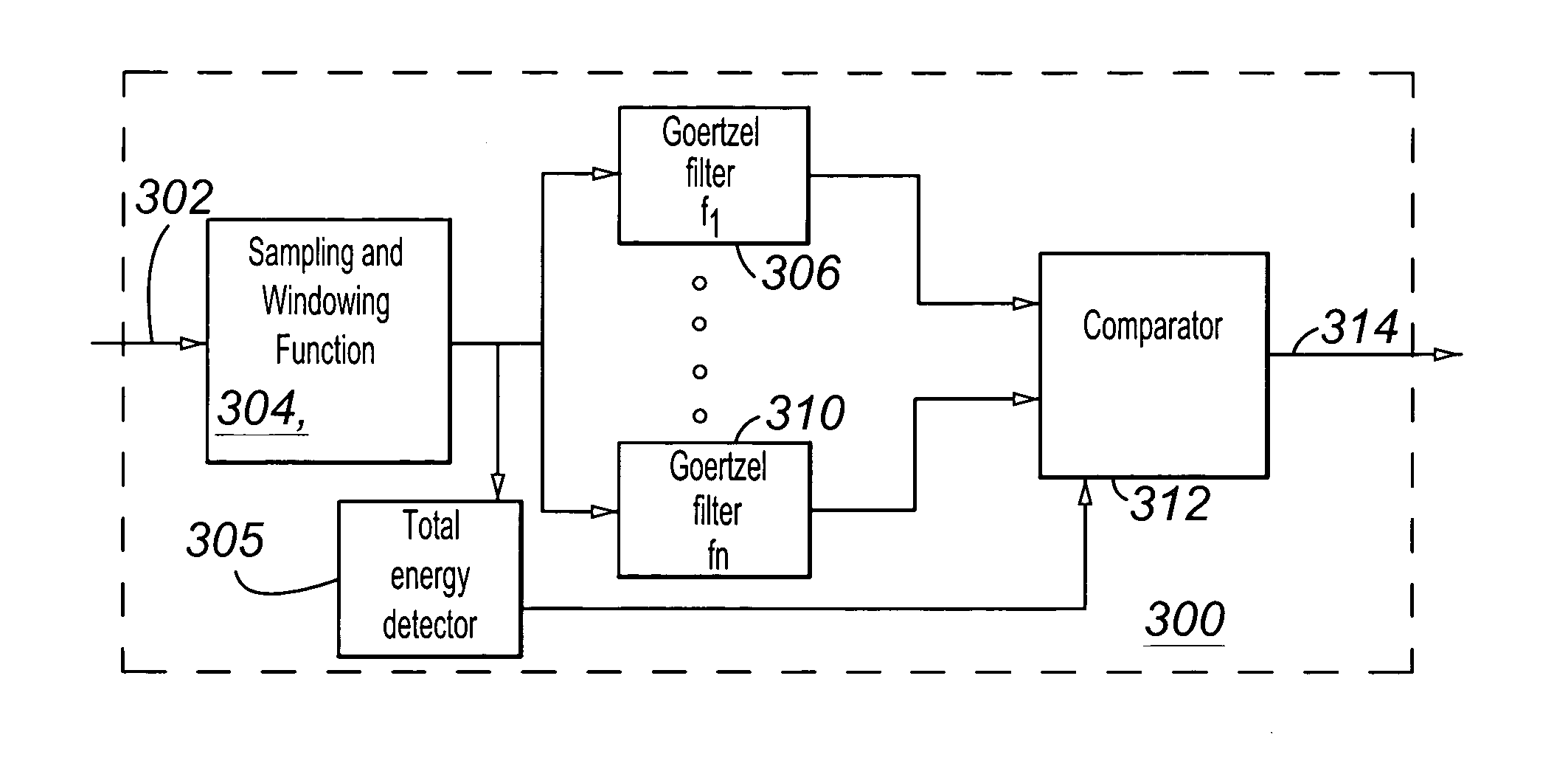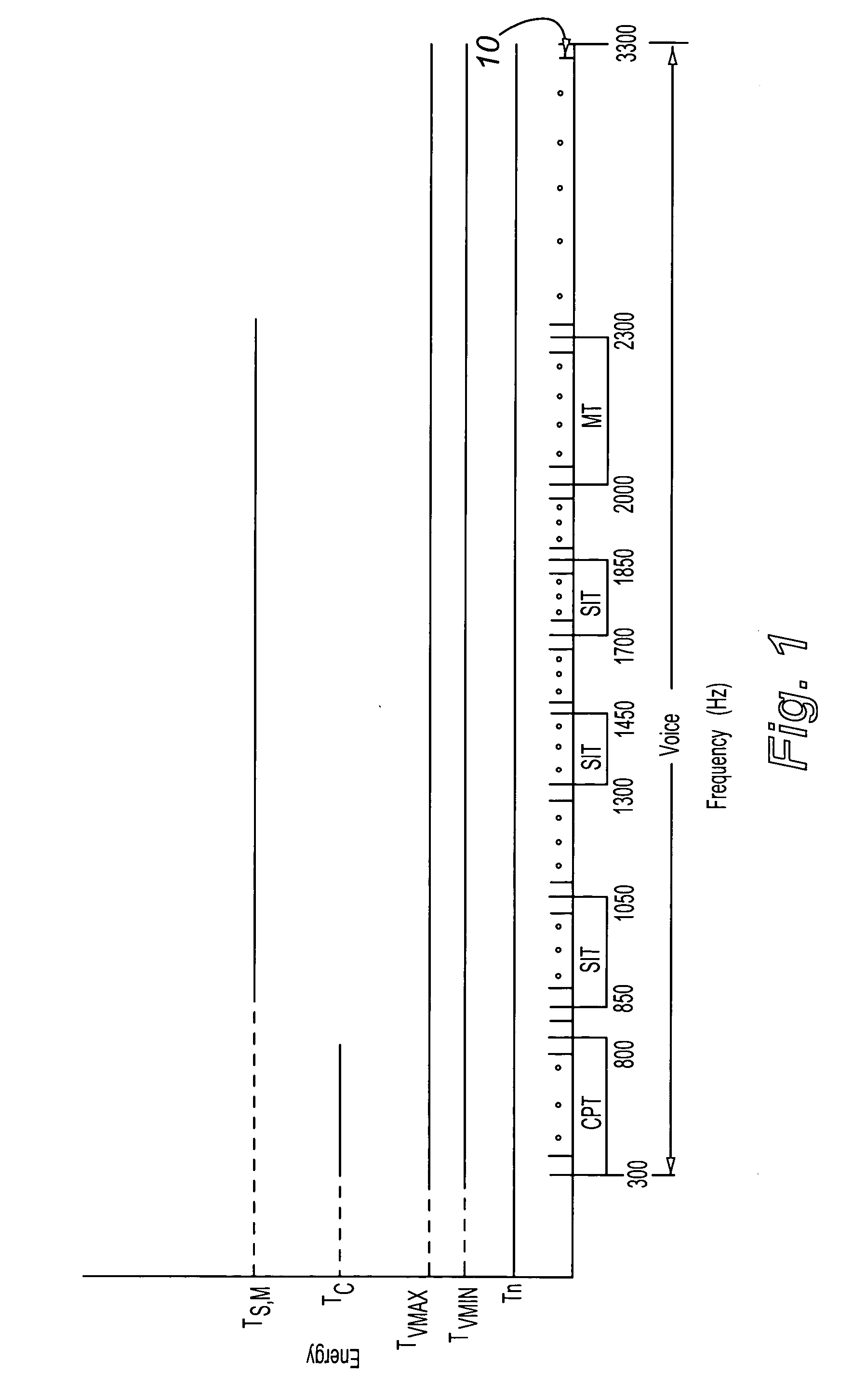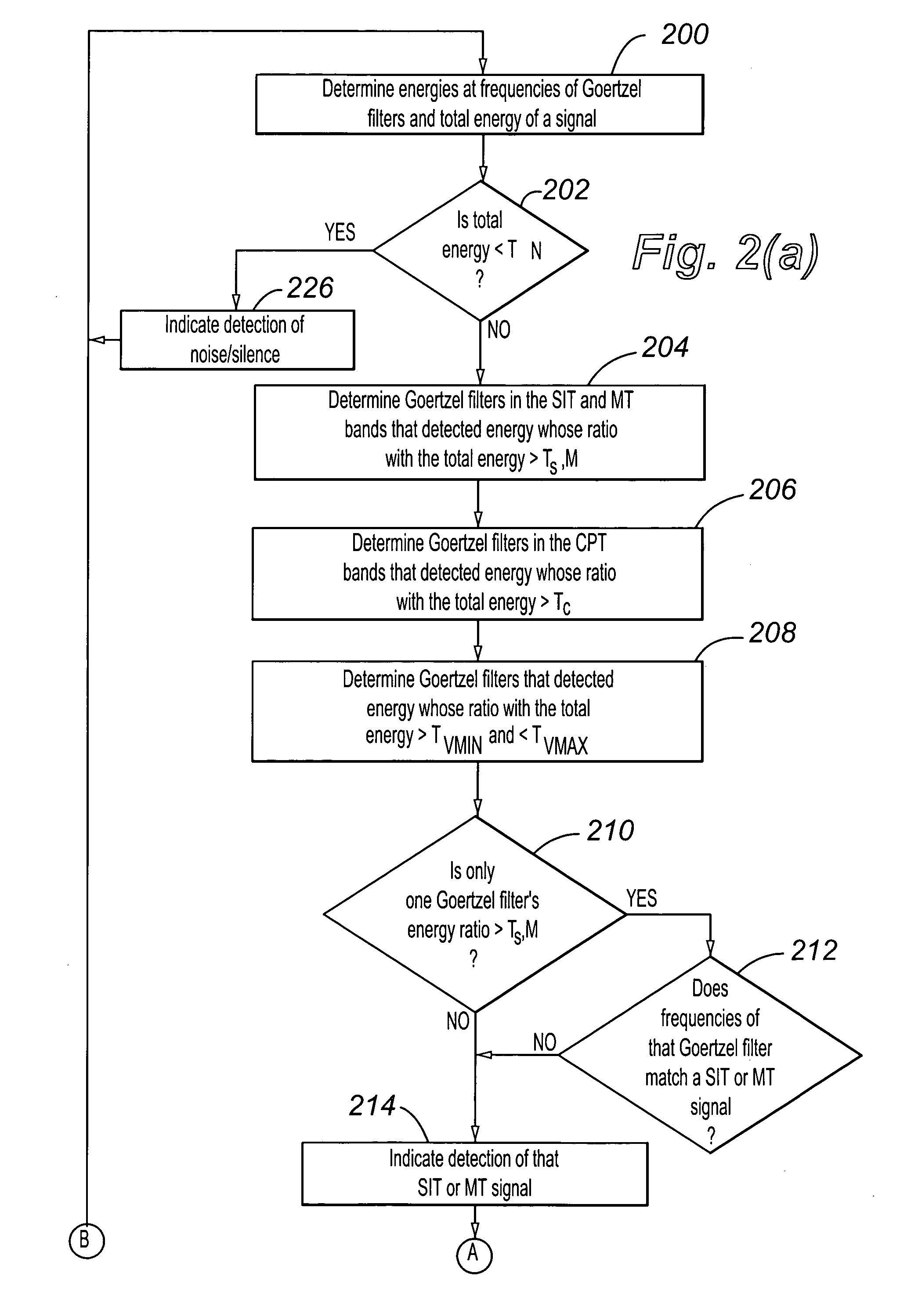Detection of both voice and tones using Goertzel filters
a filter and voice technology, applied in the field of call classification and callprogress monitoring, can solve the problems of many existing algorithms taking a long time to identify the presence of voice signals, and the tendency of not being very accurate in distinguishing voice from other sounds, etc., to achieve computational efficiency.
- Summary
- Abstract
- Description
- Claims
- Application Information
AI Technical Summary
Benefits of technology
Problems solved by technology
Method used
Image
Examples
Embodiment Construction
[0015]FIG. 1 shows the spectrum of signals that a call classifier typically must deal with. Call progress tones (CPTs), such as ringing, dial-tone, busy tone, reorder tone, etc., are typically located in the frequency range of 300-800 Hz. Special information tones (SITs), such as tones that precede network announcements, are typically located in the frequency ranges of 850-1050 Hz, 1300-1450 Hz, and 1700-1850 Hz. Modem tones (MTs), such as modem or fax answer acknowledgment, are typically located in the frequency range of 2000-2300 Hz. Voice signals mostly occupy the frequency range of about 0-4500 Hz, and are normally concentrated in the narrowband-voice-frequency range of 300-3300 Hz. Noise can occur at any and all frequencies.
[0016] Because CPTs are dual-frequency signals, signal energy is concentrated at two frequencies for each CPT. For each SIT and MT, energy is concentrated at one frequency, as they are single-frequency signals. In contrast, voice-signal energy is spread ove...
PUM
 Login to View More
Login to View More Abstract
Description
Claims
Application Information
 Login to View More
Login to View More - R&D
- Intellectual Property
- Life Sciences
- Materials
- Tech Scout
- Unparalleled Data Quality
- Higher Quality Content
- 60% Fewer Hallucinations
Browse by: Latest US Patents, China's latest patents, Technical Efficacy Thesaurus, Application Domain, Technology Topic, Popular Technical Reports.
© 2025 PatSnap. All rights reserved.Legal|Privacy policy|Modern Slavery Act Transparency Statement|Sitemap|About US| Contact US: help@patsnap.com



